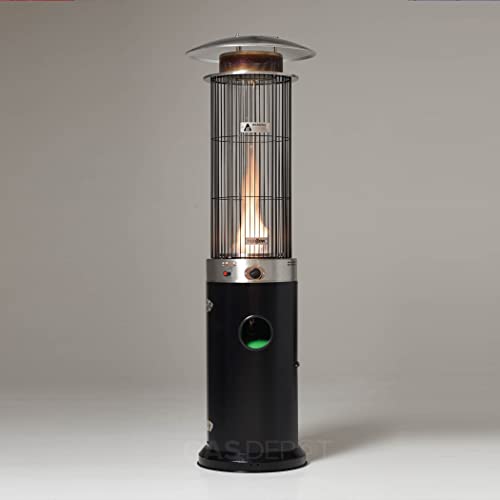How To Become A Prosperous Garden Heating Solutions If You're Not Business-Savvy
Garden Heating Solutions: Enhancing Outdoor Spaces Year-Round
As seasonal changes bring differing temperatures, garden lovers deal with the difficulty of keeping their treasured outdoor spaces. Whether for cultivating Patio Heating Solutions , entertaining guests, or simply taking pleasure in the fresh air, garden heating solutions are key to making the most of satisfaction and functionality. This article checks out numerous options offered for heating gardens, consisting of conventional and modern solutions, their advantages, and useful ideas for implementation.
Comprehending the Need for Garden Heating
A well-maintained garden should be a year-round sanctuary, using break in both summertime and winter season. The requirement for garden heating occurs from:
- Frost Protection: Certain plants, specifically tender varieties, need protection from frost to make it through chillier months.
- Extended Growing Seasons: Heating solutions can allow for earlier planting in spring and later on collecting in fall.
- Comfort Optimization: Outdoor gatherings and activities can take place more comfortably with controlled temperature levels.
Kinds Of Garden Heating Solutions
Garden heating solutions can be divided into a number of categories based upon their innovation and fuel source. Here's an in-depth take a look at some popular options:
1. Electric Heaters
Electric heaters are a versatile option for smaller gardens and patios. They are easy to install and run, using immediate heat with minimal effort.
- Types of Electric Heaters:
- Patio Heaters: Freestanding systems with a heating component that radiates heat.
- Wall-mounted Heaters: Ideal for small areas; these heaters save ground space while offering warmth.
- Portable Electric Fans: Great for targeted heating in specific areas.
2. Gas Heaters
Gas patio heaters are a conventional choice for outdoor heating and are widely valued for their effectiveness and aesthetic beauty.
- Types of Gas Heaters:
- Propane Heaters: Easy to transport and set up, appropriate for many outdoor settings.
- Natural Gas Heaters: Permanent fixtures, perfect for places with existing gas lines.
3. Wood-burning Solutions
For a rustic touch, wood-burning solutions such as fire pits and chimineas include heat and ambiance to gardens.
- Advantages and disadvantages of Wood-burning Heating:
- Advantages: Aesthetic appeal, social atmosphere, and reliable heat circulation.
- Downsides: Requires more upkeep, management of ashes, and potential fire risks.
4. Infrared Heaters
Infrared heaters utilize infrared radiation to straight warm things, making them energy-efficient and perfect for outdoor areas.
- Benefits: Immediate heat, very little energy loss, and viability for all weather.
5. Outdoor Heating Mats and Blankets
For smaller patio locations or specific zones in a garden, heating mats and blankets can be an innovative service to supply an additional layer of heat.
Considerations for Choosing a Heating Solution
When picking the very best heating solution for a garden, several factors need to be assessed:
- Garden Size: Larger spaces might need several heating sources for effective warmth.
- Budget plan: Various options exist at different price points. Cost-effectiveness can figure out the chosen technique.
- Security: Evaluate the security functions of the heating options, specifically when utilizing gas or wood-burning solutions.
- Aesthetic Appeal: Integration with garden design can enhance overall visual pleasure.
Table 1: Comparison of Garden Heating Solutions
Type
Installation
Fuel Source
Effectiveness
Expense
Electric Heater
Easy
Electrical energy
Rapid/Immediate
Moderate
Gas Heater
Moderate
Propane/Natural
High/Effective
Moderate to High
Wood-burning Option
Moderate/Hard
Wood
Efficient
Low to Moderate
Infrared Heater
Easy
Electrical energy
Immediate
Moderate to High
Heating Mats/Blankets
Easy
Electricity
Targeted
Low to Moderate
Executing Garden Heating Solutions
To make sure efficient heating in outdoor settings, a strategic method is required. Here are some practical suggestions:
- Evaluate the Layout: Consider the garden layout to identify locations where heating is most needed.
- Select Multidirectional Heaters: This will assist distribute heat more equally across the space.
- Boost Insulation: Utilize windbreaks (like garden walls) or heat-retaining materials around the heating setup.
- Include Decor: Attractive designs of heating units can boost the garden's ambiance while offering warmth.
- Regular Maintenance: Ensure that heaters (especially gas and wood-burning) are preserved for optimal efficiency and safety.
Frequently Asked Questions About Garden Heating Solutions
1. How safe are electric heaters for outdoor usage?
Electric heaters created for outdoor usage are typically safe when installed properly. Constantly follow manufacturer standards and security instructions to mitigate dangers.
2. Can I leave my gas heater outside during winter?
While lots of gas heaters are developed for endurance outdoors, it's a good idea to cover them or store them inside to secure them from severe weather.
3. Are there energy-efficient options for heating my garden?
Yes! Infrared heaters and heating mats are particularly energy-efficient as they focus heating in particular locations instead of warming the surrounding air.
4. What are the very best plants to grow in a warmed garden?
Popular choices consist of tomatoes, herbs, peppers, and other tender plants that grow in temperatures above 50 ° F (10 ° C).
Garden heating solutions exceptionally improve outdoor spaces, enabling year-round satisfaction and enhanced plant development. By comprehending the numerous kinds of heating options available and making informed choices based on personal preferences and particular garden conditions, garden lovers can change their outdoor locations into relaxing retreats, regardless of the season.
